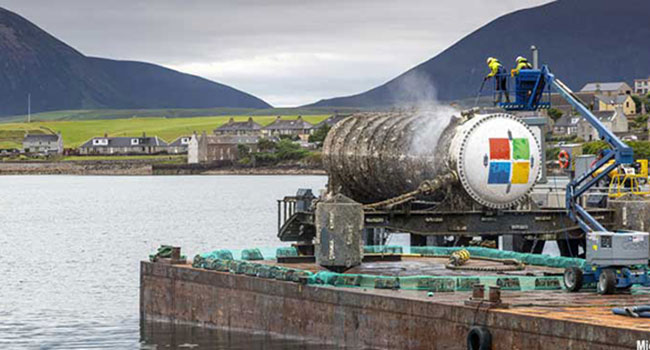
The Surprising Benefits of Underwater Data Centers
When Microsoft hauled its underwater data center up from the bottom of the North Sea and conducted some analysis, researchers found the servers were eight time more reliable than those on land.
Project Natick, Microsoft’s research program to assess the feasibility of lights-out underwater data centers, launched in August 2015 when the company installed a shipping-container-sized data center about one kilometer off the Pacific coast of the United States.
The pod recently pulled from 117 feet below the North Sea off Scotland’s Orkney Islands was deployed in June 2018, less than 90 days after the decision was made to launch. During the last two years, researchers monitored the performance of 864 standard Microsoft data center servers installed on 12 racks inside the pod. They also learned more about the economics of modular undersea data centers, which can be quickly installed offshore near population centers and require fewer resources for efficient operations and cooling.
“As we are moving from generic cloud computing to cloud and edge computing, we are seeing more and more need to have smaller data centers located closer to customers instead of these large warehouse data centers out in the middle of nowhere,” said Spencer Fowers, the technical lead for Project Natick.
To account for the improved performance, the Natick researchers hypothesized that the servers benefited from the pod’s nitrogen atmosphere, which is less corrosive than oxygen. The absence of people to disturb components also likely contributed to better reliability. If further analysis proves this theory correct, the findings may translate data centers on land, Microsoft officials said.
The North Sea-based project also demonstrated the feasibility of leveraging green technologies for data center operations.
The data center was connected to the local electric grid, which is 100% supplied by wind, solar and experimental energy technologies. In the future, Microsoft plans to explore eliminating the grid connection altogether by co-locating a data center with an ocean-based green power system, such as offshore wind or tidal turbines.
Other sustainability-related benefits may extend to eliminating replacement parts. The high reliability of the Natick’s servers means the few that fail early can be taken offline and all servers replaced about once every five years.
The Natick servers in the North Sea were set up to run jobs from the World Community Grid, an IBM sponsored distributed computing effort tackling big science problems. While submerged they also contributed to the Folding@home project to analyze the viral proteins that cause COVID-19.
Researchers also tested sending traffic from the pod 4,300 miles to Microsoft Research headquarters in Redmond, Wash., through an encrypted network tunnel protected with post-quantum cryptography.
This article first appeared in GCN, a sister publication to Security Today.